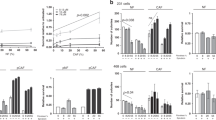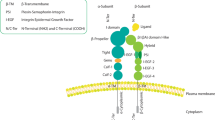Abstract
Invasion through stromal extracellular matrix (ECM) is part of the complex, multistep process of tumour cell invasion and metastasis. Our group has previously demonstrated that calcium and calmodulin are important in another step in the metastatic cascade - that of attachment of cells to ECM. Interestingly, the non-steroidal anti-oestrogen tamoxifen (which also has calmodulin antagonist activity), used in the treatment of breast cancer and now in metastatic cutaneous melanoma, can inhibit the attachment of normal and neoplastic cells to ECM. In this study, we investigated whether such drugs, known to inhibit cell attachment, could also subsequently reduce their invasion through a layer of human fibronectin. We examined the ability of the specific calmodulin antagonist J8, tamoxifen and its two major metabolites, N-desmethyltamoxifen (N-des) and 4-hydroxytamoxifen (4-OH), as well as the pure anti-oestrogen ICI 182,780 and 17beta-oestradiol to inhibit invasion of the human cutaneous melanoma cell line, A375-SM, uveal melanoma cells and uveal melanocytes. A375-SM cells and uveal melanoma cells showed a high level of invasion (15.2% and 33.7% respectively) compared with melanocytes (around 5%) under the experimental conditions used. Submicromolar concentrations of N-des, tamoxifen, J8 and 17beta-oestradiol significantly reduced the invasiveness of the A375-SM cell line. The uveal melanoma cells also showed similar inhibition, although at higher concentrations of these agents. 4-OH and ICI 182, 780 had little or no effect on invasion of A375-SM cells (these were not tested on uveal melanoma cells). All cells used in this study were found to be negative for type I nuclear oestrogen receptors, reinforcing the possibility that tamoxifen and 17beta-oestradiol can act via mechanisms unrelated to binding to classical oestrogen receptors to inhibit tumour cell invasion.
This is a preview of subscription content, access via your institution
Access options
Subscribe to this journal
Receive 24 print issues and online access
$259.00 per year
only $10.79 per issue
Buy this article
- Purchase on Springer Link
- Instant access to full article PDF
Prices may be subject to local taxes which are calculated during checkout
Similar content being viewed by others
Author information
Authors and Affiliations
Rights and permissions
About this article
Cite this article
Dewhurst, L., Gee, J., Rennie, I. et al. Tamoxifen, 17β-oestradiol and the calmodulin antagonist J8 inhibit human melanoma cell invasion through fibronectin. Br J Cancer 75, 860–868 (1997). https://doi.org/10.1038/bjc.1997.153
Issue Date:
DOI: https://doi.org/10.1038/bjc.1997.153
This article is cited by
-
Calmodulin antagonists induce cell cycle arrest and apoptosis in vitro and inhibit tumor growth in vivo in human multiple myeloma
BMC Cancer (2014)
-
Tehranolide inhibits cell proliferation via calmodulin inhibition, PDE, and PKA activation
Tumor Biology (2014)
-
Influence of the calmodulin antagonist EBB on cyclin B1 and Cdc2-p34 in human drug-resistant breast cancer MCF-7/ADR cells
Chinese Journal of Clinical Oncology (2008)
-
Anti-inflammatory and anti-invasive effects of α-melanocyte-stimulating hormone in human melanoma cells
British Journal of Cancer (2003)
-
TNF-α increases human melanoma cell invasion and migration in vitro: the role of proteolytic enzymes
British Journal of Cancer (2003)



